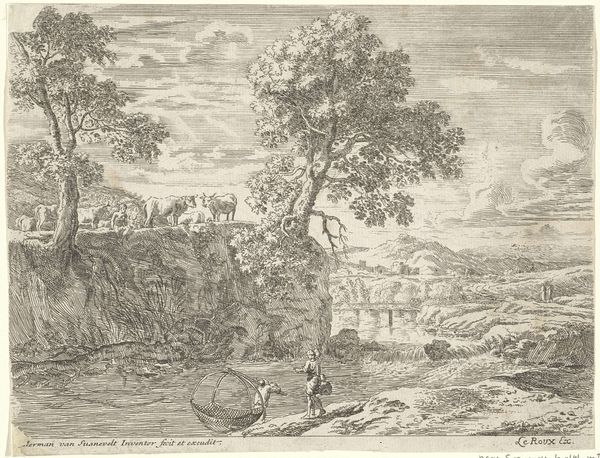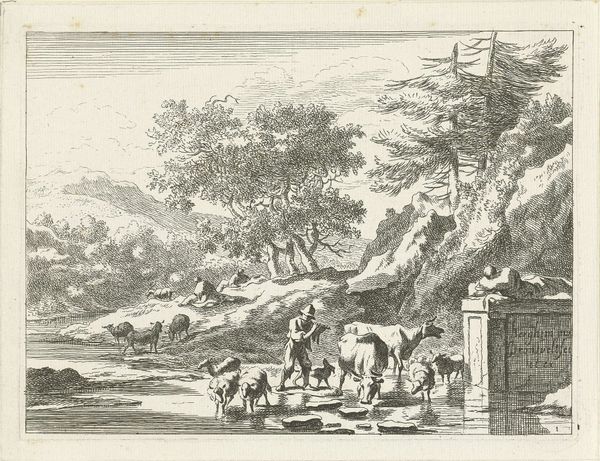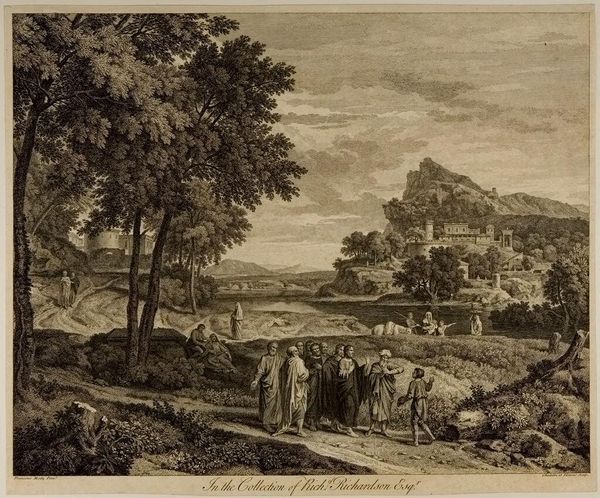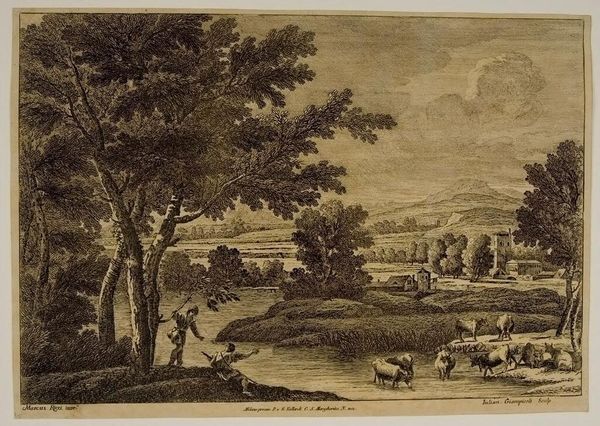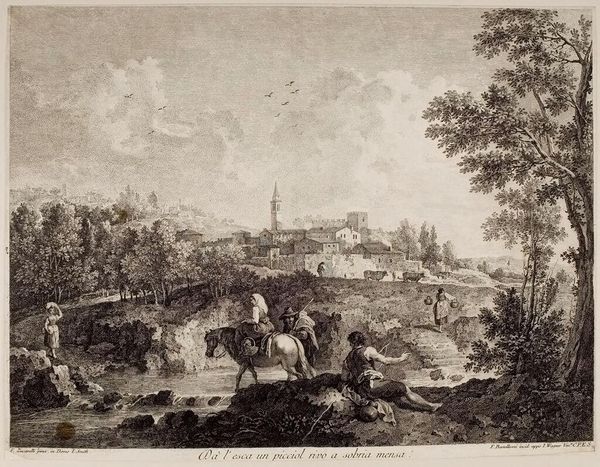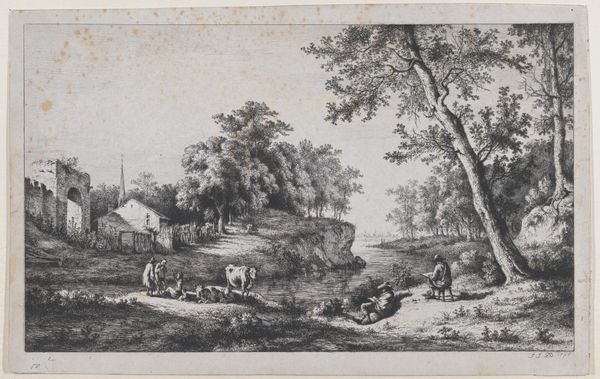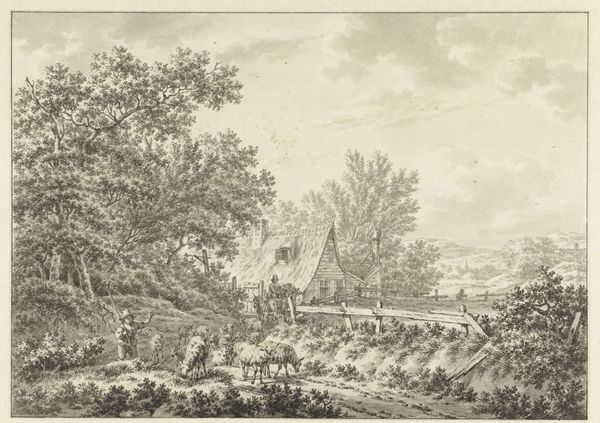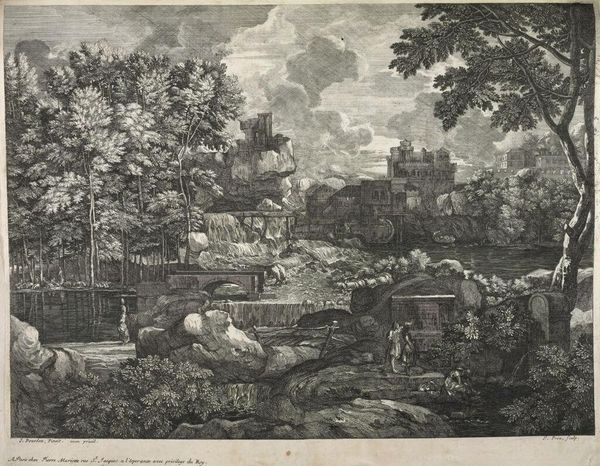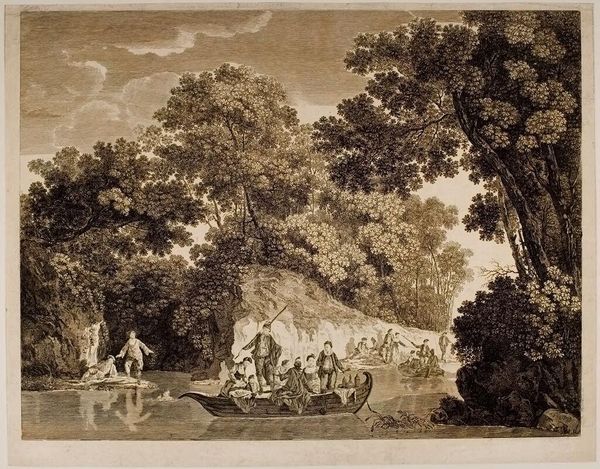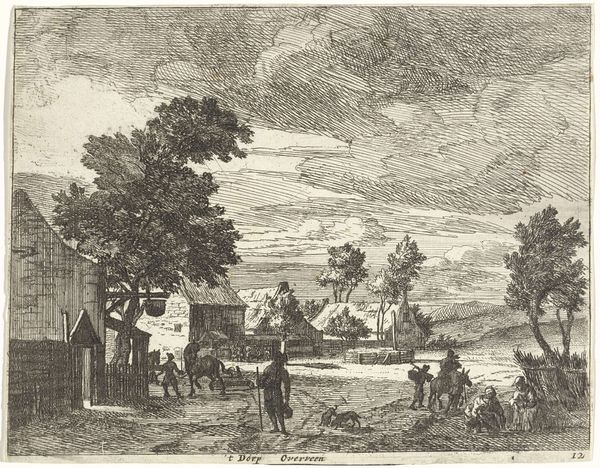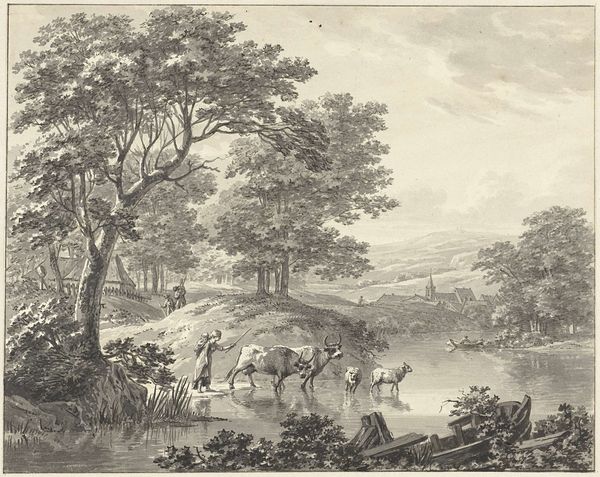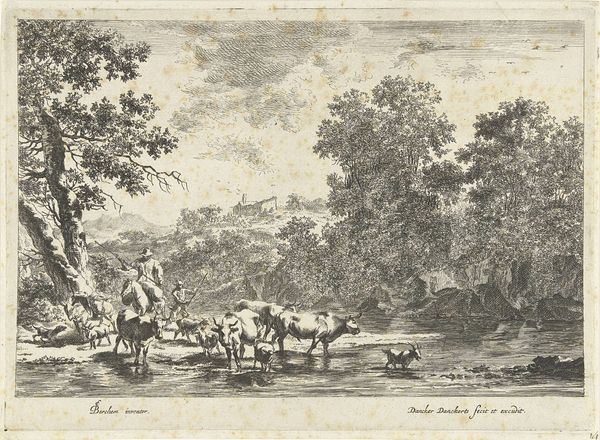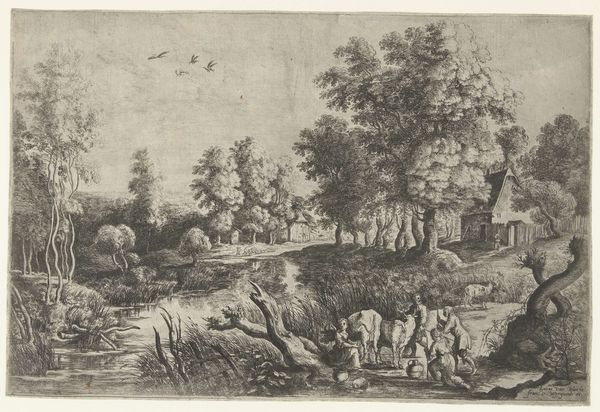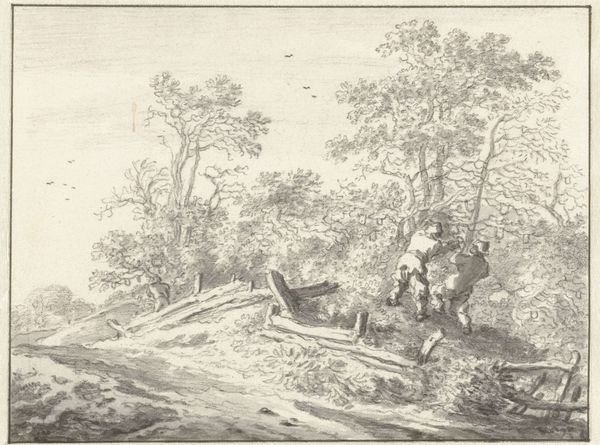
Copyright: CC0 1.0
Curator: This is John Boydell's "Cattle Passing a Ford." It presents a bucolic scene, with animals and figures wading across a shallow river. Editor: It's serene, almost melancholic. The muted tones and the figures seemingly dwarfed by the landscape evoke a sense of human insignificance. Curator: Absolutely. Consider how this fits within the eighteenth-century artistic landscape. Boydell, as a publisher and printmaker, made art accessible, influencing perceptions of class, labor and rural life. Editor: And the etching technique itself speaks to accessibility. Printmaking democratized image production, yet the idealized pastoral scene glosses over the harsh realities of agricultural labor. The cattle are central, they represent more than just picturesque elements. They are working animals. Curator: Precisely, the river acts as both a physical and symbolic barrier, reflecting the liminal spaces between social classes. The figures in the water suggest vulnerability and a reliance on both animal labor and nature's benevolence. Editor: Looking closely at the etching process gives us insight into the socio-economic context of its creation, and reveals the complex material relationships that define our world. Curator: Indeed, we gain insight into power, labor, and the artist's role in portraying these dynamics. Editor: That’s a vital consideration when interpreting this work.
Comments
No comments
Be the first to comment and join the conversation on the ultimate creative platform.
